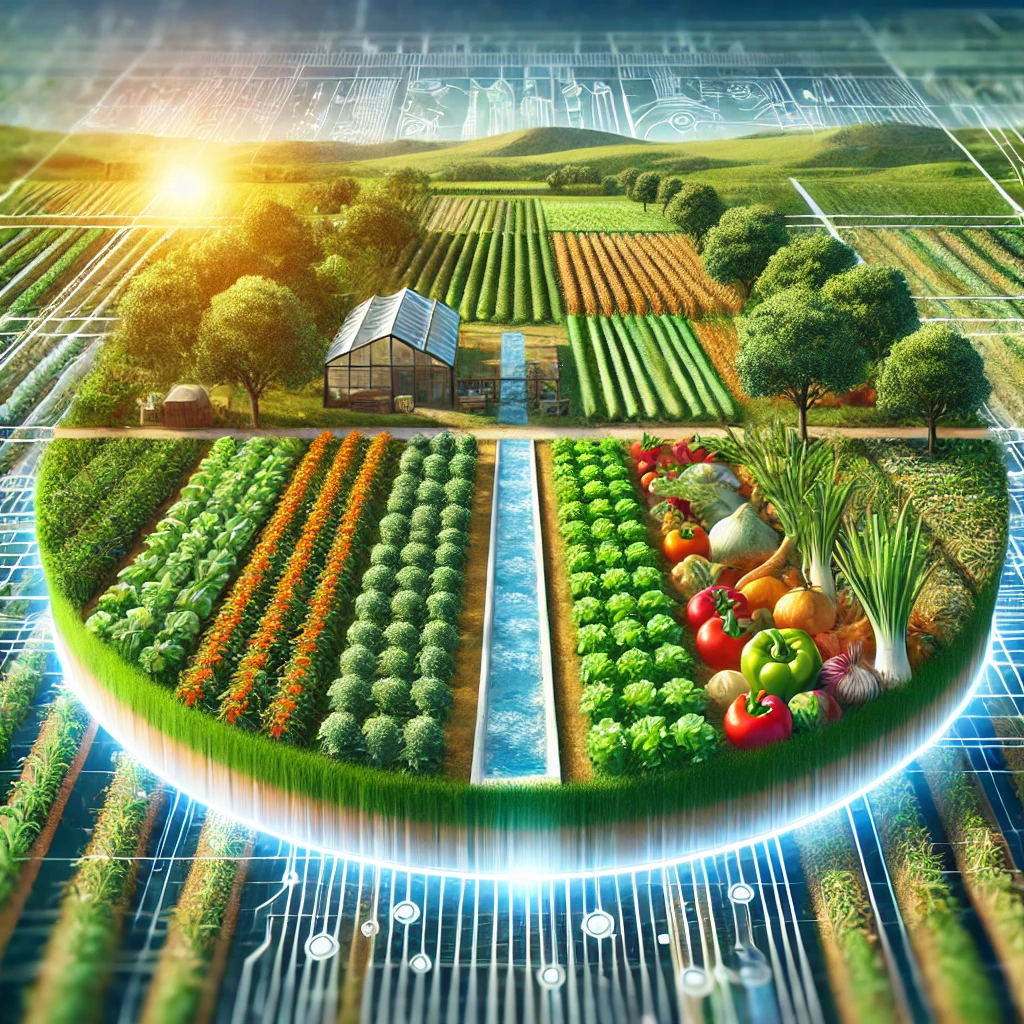Diversification in agriculture is the change from monocropping, that is, growing a single crop, to incorporating various crops, livestock, or non-farm activities. It aims at improving sustainability, increasing the income of the farmer, and ensuring food security. Agricultural diversification has become more important with today’s volatile climate and economic conditions because it relates to helping farmers reduce risks while learning to meet current market demands and optimizing resource use.
What is Agricultural Diversification?
Agricultural diversification is the process where farmers embrace other crops, livestock, and farming activities in their system. This shift helps divert the dependency of farmers on one type of agricultural output. With this shift, farmers will become less dependent on one form of agricultural output and thus make the farming operation more resilient. For instance, a farmer may decide to integrate crops with livestock or even shift from food grains to cash crops and indeed fruits, vegetables, and aqua-culture.
Types of Agricultural Diversification
Agricultural diversification may generally be classified into two types: horizontal diversification and vertical diversification.
- Horizontal diversification simply means the act of growing different types of crops on the same land or raising other kinds of livestock. For example, a wheat grower would diversify by planting vegetables or fruits.
- Vertical diversification whereby added value is conferred either through processing, packaging, or marketing of existing agricultural products. For example, a tomato farmer could not only grow tomatoes but also start a tomato sauce production activity, which would raise his income as he now sells added-value products.
Major Features of Agricultural Diversification
- Risk Management: A diversified crop or a diversified set of activities reduces the dependence of a farmer on a single crop, therefore spreading the risks arising from market fluctuations, climatic changes, and pest attacks.
- Better Resource Use: For two crops and livestock, the same resources like water, soil nutrients, and labor will be utilized differently, therefore making the system more efficient in general.
- Income Stability: Generally, diversified farms have a higher income stability than monoculture farms because a failure in one crop may be compensated by the success of another crop.
- Sustainability: Diversification promotes ecological balance by improving soil fertility, water conservation, and minimizing chemical fertilizers and pesticides.
Reasons for Agricultural Diversification
Economically, ecologically, and socially, numerous factors spur agricultural diversification.
- Market Demand: When consumers have preferences for organic and specialty crops, such as fruits, vegetables, and medicinal plants, farmers turn their farms into diversification ventures to meet those demands.
- Climate Change: Variations in the climate affect crop yields, making a farmer more vulnerable. Diversification also cushions the impact of vulnerability.
- Adaptation and Resilience: In response to changing physical conditions, the potential of diversification generally cushions the farmer’s adaptation and resilience.
- Economic pressures: With declining profitability from traditional crops either due to falling prices or escalating input costs, farmers find additional income in diversification.
- Technological changes: Better seeds, irrigation techniques, and even technology have made farmers venture into diversified operations.
Benefits of Agricultural Diversification
Agricultural diversification is beneficial for farmers, the overall economy, and the environment. These benefits include:
- Food Security: Farmers can provide a much more stable and diverse food supply by producing a range of crops.
- Income Increase: Diversified farms develop multiple revenue streams; the income risk from price volatility in any one market is thus minimized.
- Resilience to Climate Change: A diversified farm is more likely to be able to cope with unfavorable climatic conditions because some crops show more resistance to drought, floods and pests than others.
- Increased nutrition: The production of most crops, fruits, and vegetables leads to better dietary diversity and nutrition.
- Job creation: Diversification is often associated with off-farm engagements such as agro-processing or marketing. One of its direct impacts is employment creation in rural areas.
Kinds of Non-Farm Employment in Rural Areas
While agriculture is the source of employment in the countryside, their diversification towards the economy demands a major proportion of non-farm employment. Some of the means of non-farm employment are as follows:
- Agro-processing: This consists of value addition to the products of agriculture through cleaning, grading, processing, and packaging and generating additional income.
- Handicrafts and Rural Industries: Most rural households occupied themselves with handicrafts or small-scale industries such as weaving, pottery, and furniture-making.
- Tourism and Hospitality: Rural areas become an eco-tourism destination, thereby offering employment opportunities in the service sectors of tourism and hospitality.
- Retail and Marketing: A rural market opens up direct outlets to the final consumers for local producers or supply to urban markets. Employment is generated in transport, retail, and logistics.

Impact of Diversification
Agricultural diversification can be a source of robust impact on rural and national economies through their diversified sectors:
- Economic Growth: High-value crop diversification in fruits, vegetables, and flowers increases the incomes of farms and local levels of economic activities.
- Reduces Poverty: As farm incomes become higher and new employment opportunities arise in processing and services, poverty rates within rural areas can sharply decline.
- Positive Environmental Impact: Crop rotation and intercropping, techniques of sustainable agriculture, can promote diversification into advantageous soil health as well as efficient usage of water.
- Upgrading Infrastructure: Diversification in rural areas attracts investments in infrastructure such as roads, storage facilities, and markets that support diversified farming activities.
Conclusion
Agricultural diversification is crucial for building resilient farming systems, enhancing food security, and improving rural livelihoods. By incorporating a variety of crops and activities, farmers can manage risks more effectively and tap into new market opportunities. As economies and environments continue to evolve, agricultural diversification will play a pivotal role in ensuring sustainable development.
Agricultural Diversification FAQs
Why is agricultural diversification important for small-scale farmers?
Agricultural diversification reduces risks associated with mono-cropping by providing multiple income streams, making small-scale farms more resilient to economic and environmental changes.
What are the major challenges of agricultural diversification?
Some challenges include the need for initial investments, access to technology, and market linkages. Additionally, knowledge about managing multiple types of crops or livestock is crucial.
How does agricultural diversification affect soil health?
Diversification improves soil health by encouraging crop rotation and reducing the overuse of fertilizers and pesticides, thus maintaining soil fertility over time.
What role does the government play in promoting agricultural diversification?
Governments can promote agricultural diversification by providing subsidies, training, and access to technology and markets to encourage farmers to adopt diverse farming practices.
What is the impact of climate change on agricultural diversification?
Climate change increases the need for agricultural diversification, as farmers must adapt to unpredictable weather patterns by growing a range of crops that can withstand varying conditions.


